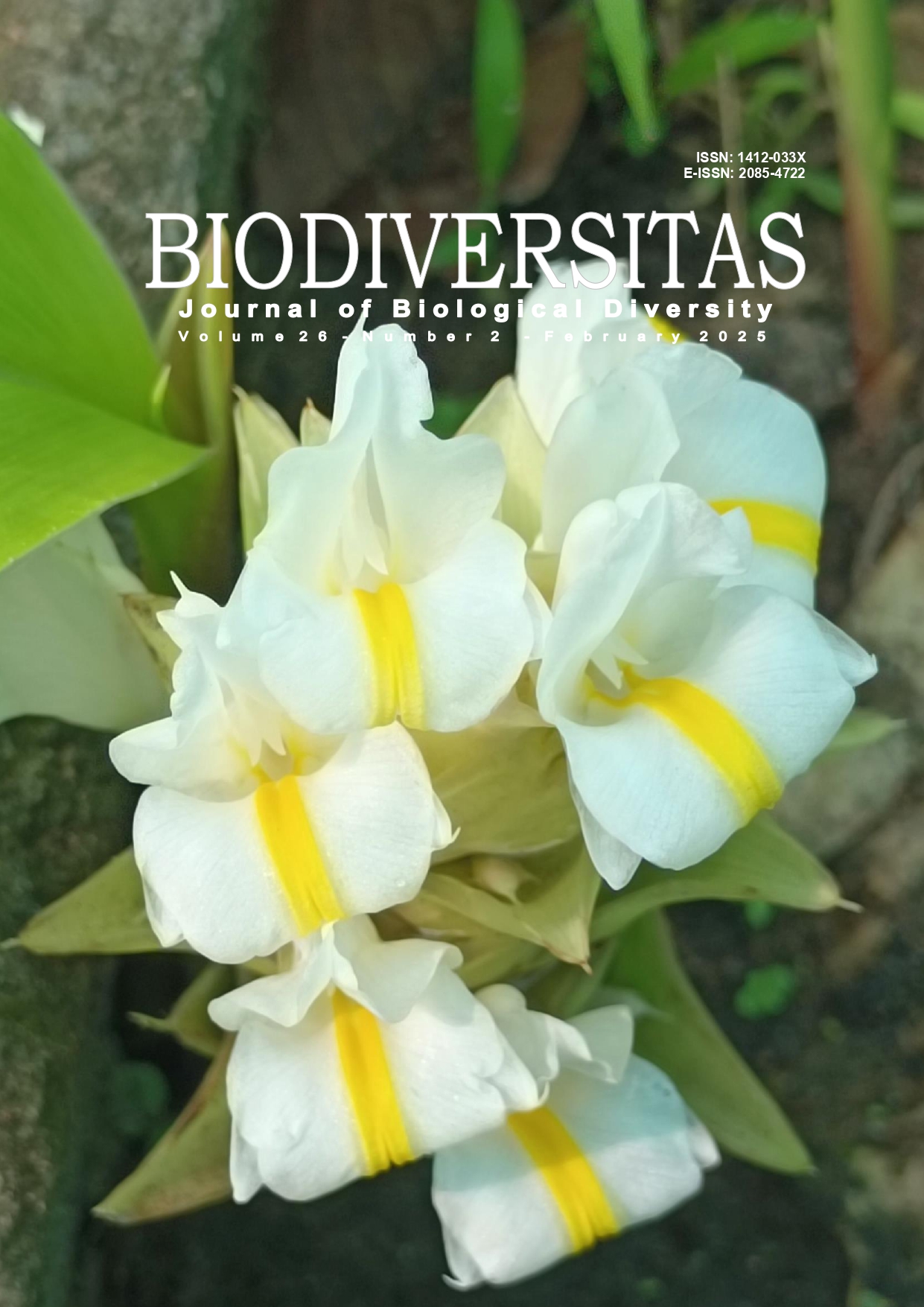Digestive tract microbiota composition of white shrimp with symptoms of White Feces Syndrome (WFS) causing high mortality in Pasuruan, Indonesia
##plugins.themes.bootstrap3.article.main##
Abstract
Abstract. Satyantini WH, Rahardjo KKE, Amin M, Mukti AT, Andriyono S, Yasin ISM. 2025. Digestive tract microbiota composition of white shrimp with symptoms of White Feces Syndrome (WFS) causing high mortality in Pasuruan, Indonesia. Biodiversitas 26: 690-697. Disease outbreaks remain one of the leading causes of failure in white shrimp (Litopenaeus vannamei (Boone, 1931)) farming, with White Feces Syndrome (WFS) continuing to pose a significant challenge. In Pasuruan Regency, particularly in Gerongan and Kalianyar Villages, shrimp farmers have reported alarming mortality rates associated with this disease, often experiencing high shrimp death rates within a single day. This study aimed to determine the primary pathogen responsible for WFS by analyzing differences in the microbial composition between healthy and infected shrimp using Next-Generation Sequencing (NGS). Shrimp samples were collected from two villages in Pasuruan where WFS outbreaks had been reported. In Gerongan Village, sampling was conducted at DOC 22, while in Kalianyar Village, it was carried out at DOC 51. Each village provided two shrimp samples: healthy shrimp and those showing disease symptoms. Healthy shrimp were identified by the absence of visible disease symptoms, such as pale hepatopancreas, empty digestive tracts, and floating white feces. Sampling was conducted manually between 10 AM and 12 PM to minimize stress. The shrimp were immediately placed in sterile cool boxes with ice packs, maintaining a temperature of approximately 4°C to preserve gut microbiota and prevent microbial degradation. The shrimp gut samples were analyzed to identify the microbial composition, revealing that the dominant bacteria in the guts of WFS-infected shrimp were pathogenic species, including Photobacterium damselae, Vibrio vulnificus, and Vibrio coralliilyticus. These pathogens are suspected to be the main causative agents of WFS outbreaks in the studied areas.
##plugins.themes.bootstrap3.article.details##
Most read articles by the same author(s)
- SINAR PAGI SEKTIANA, ANNUR AHADI ABDILLAH, MD. JOBAIDUL ALAM, WAHYU ISRONI, NINA NURMALIA DEWI, HYUN WOO KIM, SAPTO ANDRIYONO, Diversity of the Tabuhan Island coral reef fish revealed by DNA barcoding and implication on conservation strategy in Banyuwangi, Indonesia , Biodiversitas Journal of Biological Diversity: Vol. 23 No. 9 (2022)
- SAPTO ANDRIYONO, NITA RUKMINASARI, ANDI ALIAH HIDAYANI, INDRA JUNAIDI ZAKARIA, MD. JOBAIDUL ALAM, HYUN-WOO KIM, Diversity of dinoflagellate cysts isolated from estuarine sediments of the Bengawan Solo and Brantas rivers, Indonesia , Biodiversitas Journal of Biological Diversity: Vol. 24 No. 2 (2023)
- MUHAMAD AMIN, LAILA MUSDALIFAH, MUHAMMAD WAHYUDIN LEWARU, ALIMUDDIN, SAHRUL ALIM, MELISSA BEATA MARTIN, Profiling of microbiome biodiversity and structure associated with the gastrointestinal tract of Pacific white shrimp (Penaeus vannamei) using high-throughput sequencing , Biodiversitas Journal of Biological Diversity: Vol. 25 No. 5 (2024)
- ENDANG DEWI MASITHAH, MUHAMMAD GIANO FADHILAH, MUHAMAD AMIN, KURNIATI UMRAH NUR, LAILA MUSDALIFAH, SHIFANIA HANIFA SAMARA, YUDI CAHYOKO, ALIMUDDIN, SAHRUL ALIM, BAGUS DWI HARI SETYONO, Diversity and abundance of plankton community in Tawang and Prigi Bays, natural settlement habitats of Spiny Lobster larvae in East Java, Indonesia , Biodiversitas Journal of Biological Diversity: Vol. 24 No. 3 (2023)
- MUHAMAD AMIN, ANIS FITRIA, AKHMAD T. MUKTI, ANDI BASO MANGUNTUNGI, SHAFWAN AMRULLAH, SAHRUL ALIM, MELISSA BEATA MARTIN, Evaluating the stomach content of Wild Scalloped Spiny Lobster (Panulirus homarus) , Biodiversitas Journal of Biological Diversity: Vol. 23 No. 12 (2022)
- KISMIYATI, YUSUF TAUFIK HIDAYAT, MUHAMAD AMIN, Morphological and molecular identifications of ectoparasites infesting the gills of scalloped spiny lobster Panulirus homarus Linnaeus, 1758 , Biodiversitas Journal of Biological Diversity: Vol. 25 No. 1 (2024)

